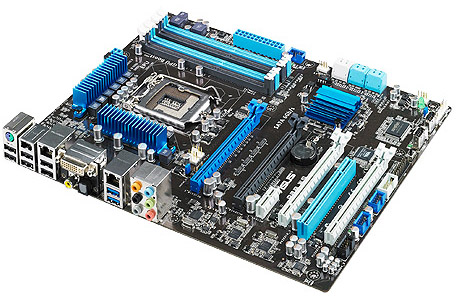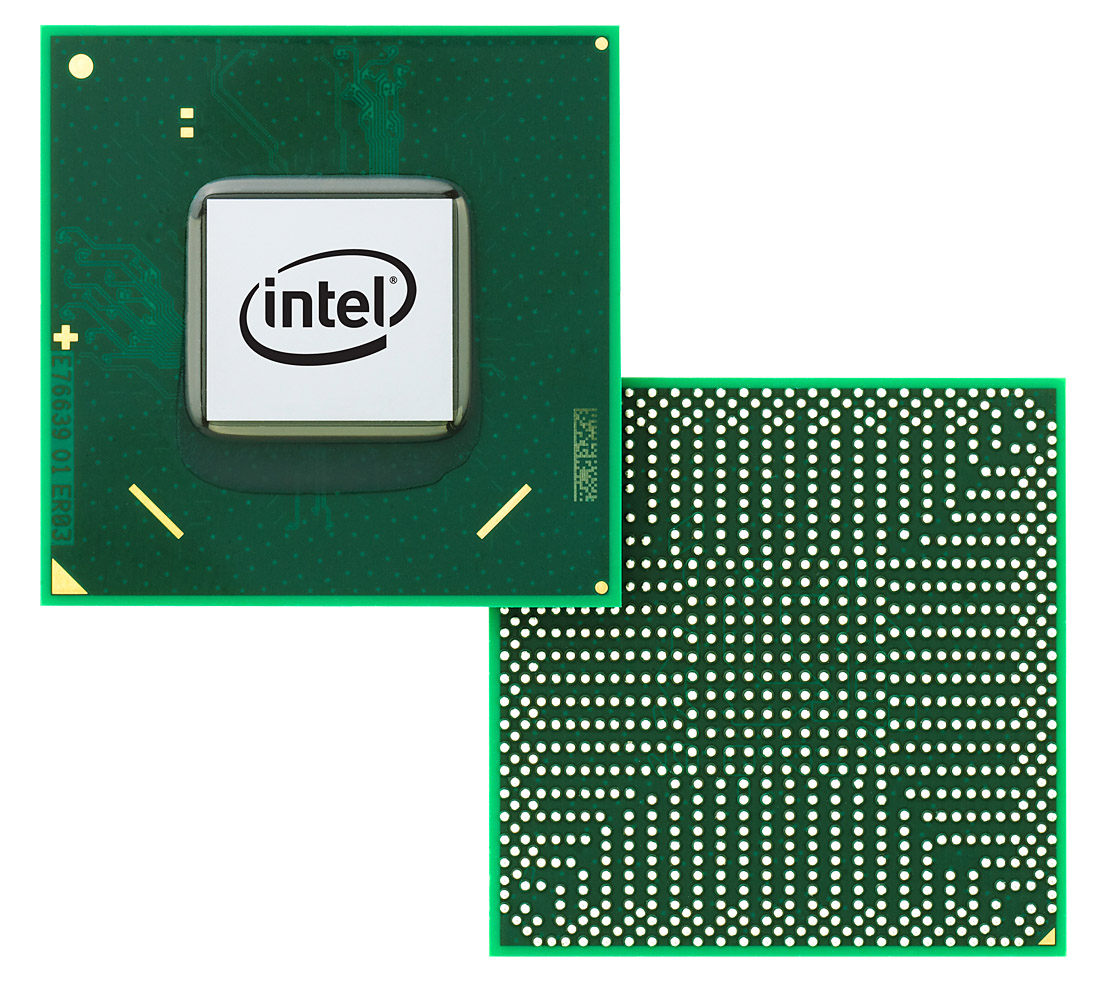Intel Xeon E3-1275 Review: Sandy Bridge Goes Professional
We've already seen Sandy Bridge impress in the desktop space. Does Intel's latest processor architecture have what it takes to dominate the single-socket server and workstation space, too? We run the fastest workstation SKU through our benchmark suite.
Intel's Xeon E3 Processors Look Familiar
Once upon a time, Intel’s server-oriented CPUs were dramatically different from its desktop offerings.
Remember the Pentium Pro, with its P6 architecture that introduced speculative and out-of-order execution to Intel’s processor lineup? That part existed at a time when the company’s desktop chips still employed the Pentium’s P5 design. Then there was Pentium II Xeon, with its full-speed on-module L2 cache that was so large (physically) it required a special Slot 2 interface.
After that, though, the desktop and 1P server- and workstation-oriented chips started converging more and more. Fortunately, Intel played it smart and, for the most part, stopped charging the massive price premiums that Xeon-branded processors once commanded. Today, there's a $10-$20 premium on the single-socket Xeons.
When Desktop Is Out Of Its Element
As a result, it never really surprises me when someone who should know better suggests saving a few bucks by building an entry-level server for a small business using a desktop processor. “It’s just branding, after all.” Shoot, I’ve even shown up to consulting assignments and found Celeron-based servers built by tier-one vendors. Call me old-school, but cutting corners just isn’t in the customer’s best interest.
To me, it doesn’t matter if you’ve had better luck with AMD or Intel. Emphatically, I’d insist that businesses shouldn’t use desktop platforms to drive their mission-critical machines. If it only means getting ECC memory support and a better-qualified motherboard in an Opteron- or Xeon-powered setup, spending the extra money is worth it.
That’s an easy idea to hammer home when you’re talking about dual-socket setups like the one I addressed in Intel Xeon 5600-Series: Can Your PC Use 24 Processors? After all, no amount of trying will get two LGA 1366-based Core i7s working together in a motherboard powered by Intel’s 5520 I/O Hub. Really, your only way to go there is Xeon. But Intel sells single-socket versions of its Xeon chips too.
Get Tom's Hardware's best news and in-depth reviews, straight to your inbox.
Particularly when the 1P desktop and server chips center on the same architecture, it’s tempting for system builders to go the less-expensive desktop route, assuming performance will be the same anyway. Given the same-sized caches, number of cores, and clock rate, performance probably will turn out similar (if the Xeon-based machine doesn’t end up a little slower due to its ECC memory). So, Intel continues to face an uphill battle in convincing its customers that, even in single-socket configurations, Xeon is the way to go.
Segmenting The 1P Market
When you talk about single-CPU systems intended for businesses, there are two principal areas of interest: entry-level servers and workstations.
The server-oriented folks are either looking at a light-duty workhorse in an SMB environment or adding nodes in a dense rack. That means power consumption and thermals are important variables. Moreover, management becomes a must-have. Even the orientation of PCI Express slots matters—servers don’t need 16-lane links. And when you’re talking about Lynnfield, Clarkdale, or Sandy Bridge, each with only 16 lanes of processor-based connectivity, enabling ample expansion means dividing them up smartly.
On the workstation side, you expect to run in a pedestal chassis with plenty of airflow. Heat and power consumption are generally non-issues, so the goal is to get as much performance out of the platform as possible. Managing a workstation remotely is less critical. And because discrete graphics cards are far more prevalent in workstations, the availability of at least one x16 slot is preferable.
Now, before today, Intel’s single-socket CPU portfolio consisted of the Xeon W3500 and W3600-series workstation-oriented processors, and the Xeon 3400-series chips. Foreign though they might sound, all three lineups center on architectures familiar from the desktop world. Xeon W3500 is based on the 130 W Bloomfield core for LGA 1366. Xeon W3600 employs the six-core Gulftown design, which of course means it maintains the same thermal ceiling and drops into the same interface. Most of the Xeon 3400-series offerings are 45 nm Lynnfield dies, though there are a couple of 32 nm Clarkdale-based models in there, too.
The Xeon E3-1200-series alters that landscape significantly, displacing Intel’s 3400- and W3500-series models with a number of Sandy Bridge-based options. The Xeon W3600s remain, delivering threaded performance that the E3s simply cannot match using four physical cores. Let’s break the stack down in more depth.
Current page: Intel's Xeon E3 Processors Look Familiar
Next Page Intel’s Xeon E3-1200-Series Family-
dragonsqrrl one-shotStop teasing and give us a six core Sandy Bridge CPU!Sandy Bridge-E, LGA 2011 X79, Q4 2011.Reply -
agnickolov Finally a compilation benchmark! Now please make it standard in your test suite for CPUs and storage so there's a real benefit from it all for actual comparisons.Reply -
DavC Thanks for this review Chris, very well covered. I'll probably be refering back to this when it comes to spec our next workstations.Reply -
I think this is a useless review. Why are we comparing Apples to Oranges? Lets compare current generation Xeons to Previous generation Xeons.Reply
-
dgingeri one thing I can attest to: companies who cheap out on their workstations and servers never perform well as companies, and eventually fail.Reply
I've worked with many small businesses, and every one that used a desktop chip for a server or a discount chip (Celeron, Duron, etc) for their desktop computers all performed very poorly. Some seemed to hang on by the sheer will of the owner, and in a couple cases, when the owner got sick for more than a week, the businesses folded like lawn chairs.
I've also seen an Engineering shop of ~30 engineers invest nicely into a real server and real workstations, and had me set up their entire network with SBS. their business ramped up so fast and well that they had to hire several more engineers and outgrew SBS (limited to 50 users at the time) within the next 2 years, and I had to go back and rebuild their domain with full enterprise level software, and add another server specifically for email. the owner said the investment in that SBS system was the best thing he'd invested in the business since he hired his first engineer.
Business owners who do not invest in their IT infrastructure fail at business. It's pretty plain and simple. While investing in good IT gear and software doesn't mean you'll ramp up your business to unheard of heights, it does give you a major leg up on the competition. -
given the option of a cheaper Xenon that does not have the P3000 im pretty sure 90% of companies would choose that option, discreet graphics would almost exclusively be employed for the majority of workstation class desktopsReply


